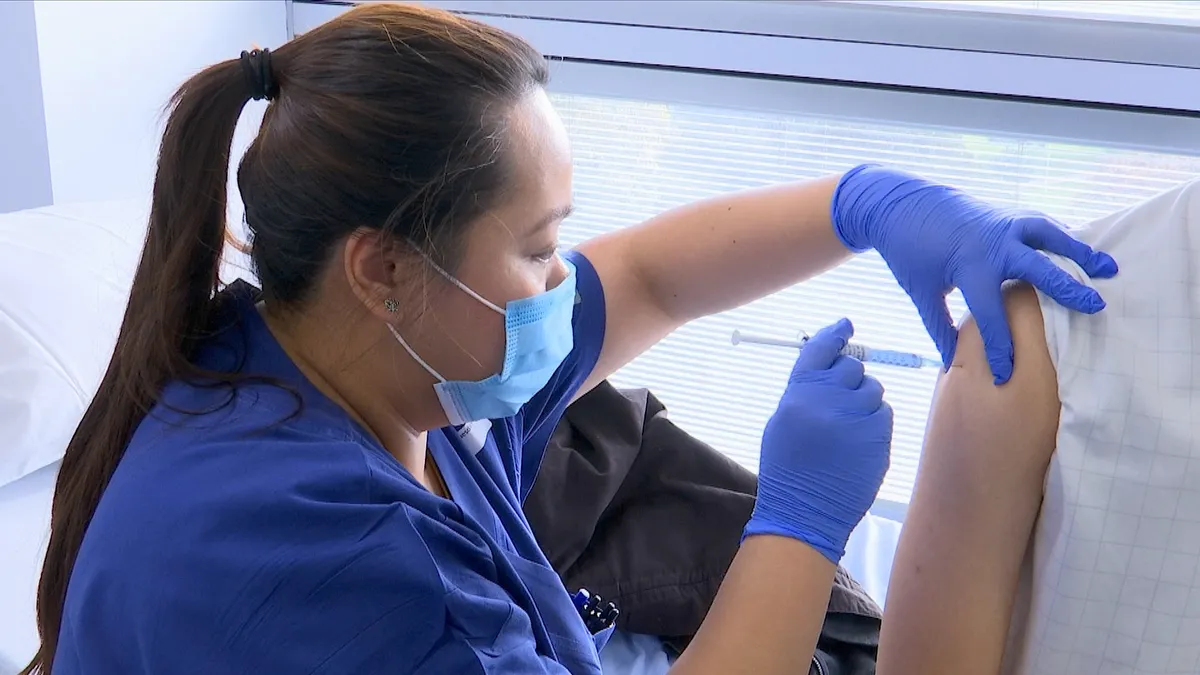The percentage of employees vaccinated against COVID-19 will be the most important supplier key performance indicator of 2021, surpassing the standard KPIs of on-time delivery, quality, and cost management.
The recent approval and release of the first shipments of the COVID-19 vaccine have turned our fight against the virus from a defensive to an offensive position. Each day will see more and more people getting vaccinated, and some forecasts have a return to an adjusted normalcy by late spring, with continued improvement after that.
Buyers and suppliers alike, not planning today for a return to normalcy tomorrow, are at a disadvantage. And vaccine rates play a large role in that planning. While it will take some time for the entire population to get vaccinated, incremental and growing business compliance will be a KPI worth tracking.
Suppliers that can demonstrate they have an inoculated workforce will be in an enviable position to meet the forecasted post-pandemic economic expansion. They may use their vaccine compliance rate as a competitive advantage, proving resilience and securing business from new customers already straining for increased supply chain capacity. This may leave some existing customers, who are not taking recovery seriously, in the lurch.
Vaccine compliance needs to be a top-line component of a supplier risk assessment. Procurement professionals today should immediately reach out to critical suppliers to learn about their vaccination plans and subsequent efforts to secure a healthy workplace, and workforce, during the pandemic recovery. If there is no established plan, request one. Be an early leader in the supply chain recovery.
Here are three things to consider when dealing with the supply chain during the early days of recovery.
Focus on science, not politics
Avoid the political discussions around the pandemic and focus on science and data. It is obvious that suppliers with proper safety protocols, and an increasingly vaccinated workforce, are stronger ones. Stress the importance of how vaccination rates are now a significant part of supplier performance criteria.
Set clear supplier expectations for vaccine compliance. I've jettisoned suppliers who had an unsafe work environment, treated employees poorly, resisted sustainability efforts, used a questionable supply chain or whose management philosophies were misaligned with mine. I'd add policy toward employee inoculation to that list.
There are some in the supplier community who feel the pandemic is a hoax, go mask-free, and claim to be anti-vaccine, making a political statement with their resistance. Working with these types of suppliers might go against your vaccine strategy, forcing some tough sourcing decisions. Your supplier compliance metrics may include some waivers for certain suppliers. Full compliance may not be reasonable, or attainable.
Check supplier tiers
Supply chain risk focuses on continuity of supply. While we can focus on key tier 1 suppliers to understand their inoculation strategies, there is less visibility into the other supplier tiers. Some critical suppliers may be in areas of the world where vaccinations are more challenging to distribute, adding significant risk.
Virus related supply challenges may last well into 2022. Consider a supply chain strategy that acknowledges that. Reinforce the need for inoculation throughout the extended global supply chain as part of your ethical and social supply chain management initiatives. Emphasize your inoculation requirements through expanded supplier communication.
Keep your own house in order
As procurement professionals, we are putting the onus of inoculation squarely on the supplier community. But what about our own companies? Should suppliers care if their customers are vaccinated and maintain a safe workplace? Yes, and for two different reasons.
First, supplier employee safety. Delivery drivers, service technicians, salespeople and others with close and direct interactions with customers who are not taking the virus seriously are at risk. Suppliers will not overtly put their employees in danger, resulting in service interruptions and degraded relationships.
The second area is the financial impact on the supplier. Customers with a disregard for the virus risk significant interruptions in their business, impacting cash flow and potentially slowing payments to suppliers.
A supplier's employee turnover rate has always been my favorite KPI, with the assumption that lower employee churn was an indicator of a relatively well-run organization. It also allowed for consistency of output and a flattened learning curve, leading to process improvements and potential cost reductions.
For the time being, that turnover metric will be replaced with the employee inoculation rate, a pandemic-related KPI that will hopefully become irrelevant in the years ahead.
This story was first published in our weekly newsletter, Supply Chain Dive: Procurement. Sign up here.





















